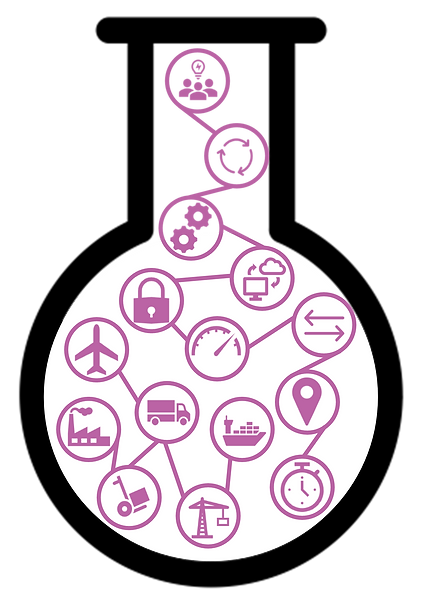To monitor and control something, you need to see it and also measure it.
When looking at cold supply chains, monitoring the temperature provides you with visibility that helps you to establish a range of acceptance, measure it, and therefore, control it to reduce casualties.
Temperature recorder devices provide visibility in refrigerated supply chains by monitoring the temperature for some time. Others provide a deeper visibility reach with real-time temperature data that confirms the actual ambiance in temperature-controlled spaces.
From simple devices to sophisticated ones, all are meant to provide useful data.
Knowing the temperature history is a great tool to support quality control efforts, safety, and FDA guidelines. But leveling up and having access to this information in real-time, could help you identify a temperature discrepancy in transit before damages can happen to the product.
For example, let's think of a refrigerated container loaded with fresh spinach and other fresh greens. A temperature recorder device is placed inside and it is registering a temperature of 10°F. Cargo is at extreme risk of freezing. The temperature recorder device sends an alert advising the temperature is out of the established parameters. This alert is emitted and received in real-time (with some devices); it is meant for a prompt action to prevent mayor damages and to avoid loss.
The sooner a temperature discrepancy like the previous one is identified, the better. Remember the famous line "timing is everything"? In this case, it is.
There are different types of temperature recorder devices. Your temperature-controlled products may require a specific type or a combination of some.
Check out the following 4 most used types of temperature recorder devices and some of their features:
1. Strip Temperature Recorders - low cost, one-time use, easy to use, measures from 5 (or 10) days to 90 days. It is sealed at the device manufacturer and the temperature is marked in a strip inside of the device. These are not fully water-resistant and battery-powered. No additional hardware or software is needed to retrieve the data. Not designed for real-time data.
2. Conventional Recorders - designed for food, industrial and scientific uses. Some are single-use and others allow multiple usages, for up to 12 months; includes a non-replaceable battery. Features high and low parameters and alarms. Some models are water-resistant. Additional hardware and software are needed to retrieve the data. Not designed for real-time data.
3. Wireless Temperature Recorders - Features alarm limits and temperature data can be wireless-retrieved for up to 300 feet away (range varies depending on the device and the receiver). Battery-powered. Additional hardware and software are needed to retrieve the data.
4. Real-Time Temperature Recorders - Designed for real-time data visibility when handling food, industrial and scientific products. It pins location, confirms temperature and humidity levels, features email notifications, alarm setting, and temperature range. Additionally, it provides from 7 to 60 days of battery life for data monitoring and retrieving other reports in programmable intervals.
If cargo will be in transit, you want to do your part to reduce temperature variations that could harm the products. Take a look at the following recommendations:
Set cleaning procedures and proper loading layouts to support good airflow inside of the refrigeration unit.
Before selecting a refrigeration unit: inspect it, set its temperature correctly, and pre-cool it.
Make sure the product that will be loaded is cooled properly before loading it into the refrigeration unit.
After loading the product, make sure that the refrigeration unit maintains the proper temperature while in transit.
By doing these, you allow the refrigeration unit to operate as expected. Together with having the temperature recorder device placed inside of the refrigeration unit, the monitoring and measuring process is trustworthy, and also allows you to reduce loss by detecting and correcting discrepancies early and while in transit.
If you would like to know more about temperature recorders or other related subjects, please feel free to contact me. Send me an email with more details: MyLogisticsLab@gmail.com.
About the Author: My name is Gloria Isamar Rivera. I have more than 17 years of combined experience in business administration, marketing, customer service, supply chain, logistics, and 3PLs. I consider myself a young professional, a supply chain leader, and an out-of-the-box strategist. I enjoy the simple things in life and value every process as a learning experience. Looking forward to sharing something interesting for you very soon! Thank you for reading! ;-)

















Comments